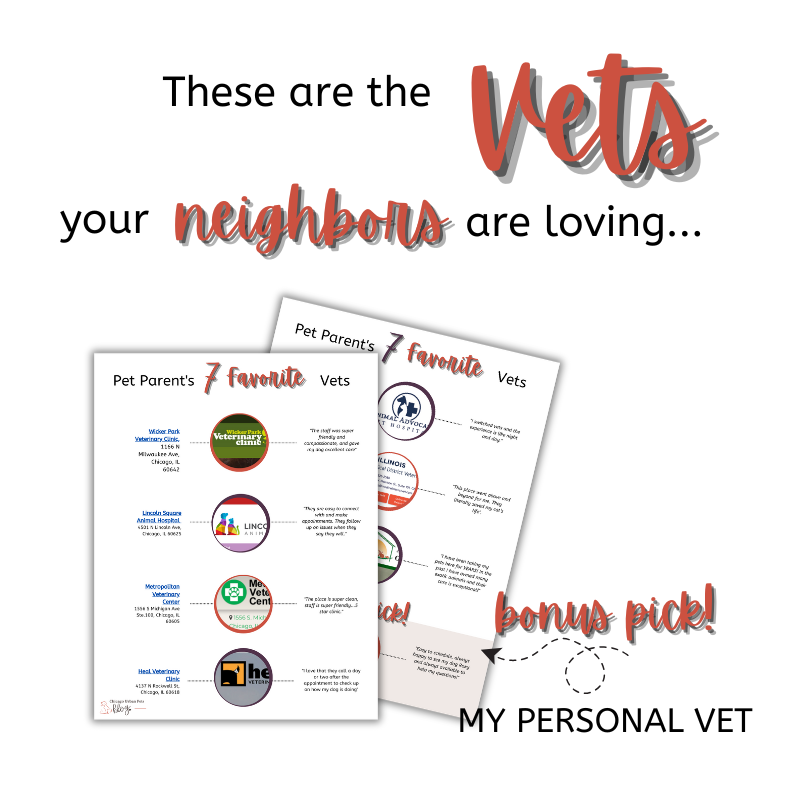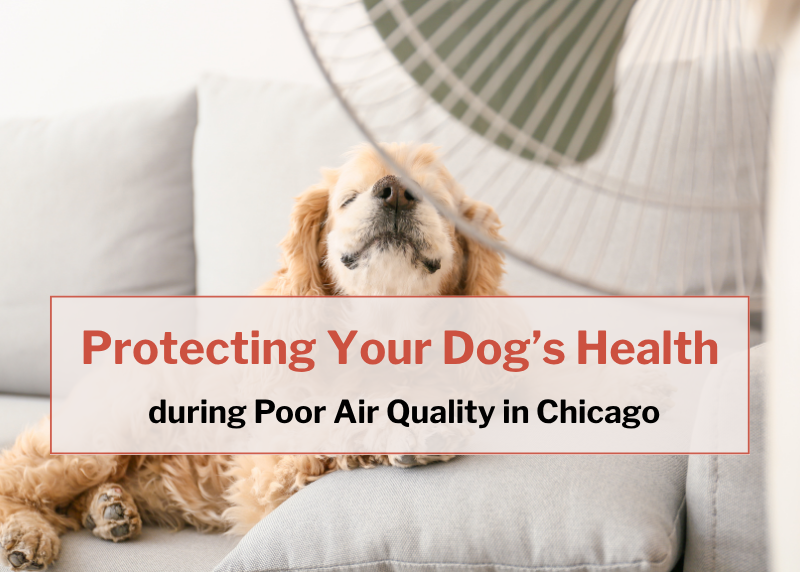As a responsible dog owner, it’s natural to be concerned about your furry friend’s health, especially during periods of poor air quality like right now in Chicago with the Canadian wildfire. In this blog post, we will address your concerns and provide you with valuable information on how to protect your beloved pet’s well-being during such times.
Disclosure: Some articles on this site may contain affiliate links, meaning, at non additional cost to you, Chicago Urban Pets may earn a commission if you click through and make a purchase. As an Amazon Associate we earn from qualifying purchases.
Summary
- Check the Air Quality Index (AQI) daily before walks to know if it’s safe for your dog to be outside.
- On poor air quality days, limit outdoor activity and opt for indoor play or enrichment instead.
- Watch for signs of distress like coughing, wheezing, or lethargy and contact your vet if they appear.
- Consider air purifiers indoors and wipe down your dog’s fur and paws after brief outdoor trips.
Warning Signs Your Dog Is Struggling with Air Quality

When air quality declines, it’s important to watch for signs that your dog may be adversely affected. Keep on mind that if your dog has pre-existing health issues to be extra cautious and contact your veterinarian right away.

New pet parent or just looking for a switch? Here are 7 trusted vets in the city — and as a bonus, the one I take Roxy to myself! ?✨
Look out for the following symptoms:
Coughing and wheezing: Poor air quality can irritate your dog’s respiratory system, leading to coughing and wheezing.
Difficulty breathing: If your dog is having trouble breathing, it could be a sign that they are being affected by the current air quality.
Lethargy: Dogs may become lethargic or less active when affected by poor air quality. If your dog seems less active, keep them indoors and monitor their activity.
Eye and nose irritation: Poor air quality can cause irritation to your dog’s eyes and nose, leading to discharge or redness.
Decreased appetite: Dogs may lose their appetite or become less interested in food when the air quality is poor.
Increased heart rate: Poor air quality can cause your dog’s heart rate to increase, especially if they have a pre-existing heart condition.
If you notice any of these signs, it is crucial to take appropriate action to protect your dog’s health. Contact your veterinarian for further steps to take to ensure your dog’s continued health.

Indoor vs. Outdoor Time When Air Quality Is Poor

During periods of poor air quality, it is generally advisable to keep your dog indoors as much as possible. The current air quality in Chicago due to the wild fire in Canada is in the red zone which means really bad.
Indoor shelter can provide a safer environment by reducing your pet’s exposure to harmful pollutants. Here are some tips to ensure your dog stays safe indoors:
Indoor air quality: Create a comfortable and well-ventilated space for your dog. Use air purifiers or consider investing in indoor plants that naturally filter the air.
Close windows: Keep windows and doors closed to prevent outside pollutants from entering the house.
Indoor Activities: Engage your dog in mentally stimulating activities and provide interactive toys to keep them occupied.
You might also be interested in:
How Bad Air Affects Your Dog’s Health

Poor air quality can indeed have adverse effects on your dog’s health. Dogs, just like humans, can suffer from respiratory issues and other health problems due to exposure to pollutants.
At the time of writing this blog post, the current air quality in Chicago due to Canadian wildfire is dangerous for our dogs. Here are some potential health problems that may arise:
- Respiratory infections
- Allergies and skin irritations
- Asthma or bronchitis
- Eye and nose infections
It is crucial to be proactive in protecting your dog from the harmful effects of poor air quality.
Tips to Keep Your Dog Safe on Poor Air Days

You can take several measures to protect your dog from the negative impacts of poor air quality. Consider the following steps:
Limit outdoor activities: Reduce the duration and intensity of exercise or walks outside when air quality is poor.
Choose optimal times for outdoor activities: Plan your dog’s outdoor activities during times when air quality tends to be better, such as early mornings or late evenings.
Use protective gear: In extreme situations, consider using a doggy face mask or a protective coat to minimize your pet’s exposure to pollutants.
Opt for indoor exercise: Engage your dog in indoor exercises, such as interactive toys, puzzle games, or teaching new tricks, to keep them mentally and physically stimulated while avoiding outdoor pollution.
Keeping our dogs indoors more than they are used can be challenging but with a little bit of creativity we can all get through this smog safely!
Best Tools to Track Air Quality Near You

To stay informed about the air quality in your area, you can utilize the following resources:
-Check Air Quality Index (AQI) Websites: Visit reliable websites that provide real-time air quality information for Chicago, such as AirNow or the Environmental Protection Agency’s (EPA) Air Quality Index.
– Air quality apps: Install apps like AirNow, Plume Labs, or BreezoMeter on your smartphone to access real time alerts are good too.
Be Proactive

Prioritizing your dog’s health during periods of poor air quality is essential. By recognizing the signs of distress, keeping them indoors when necessary, and taking proactive measures to protect them, you can minimize their exposure to pollutants. Stay informed about the air quality in your area and adjust your dog’s activities accordingly.
With your love and care, you can ensure your dog stays healthy and happy despite current environmental challenges.
If you are looking for a pet care/ dog walking service that is always up to date on potential health threats for your dog, come check out Chicago Urban Pets’ services:

If you’re based in Chicago, we recommend Green Paws Chicago for compassionate, professional dog walking. They’re a trusted local service that helps your dog stay active and social even while you’re away.
(When signing up, don’t forget to mention Chicago Urban Pets to support the blog and help us continue creating helpful content.)

